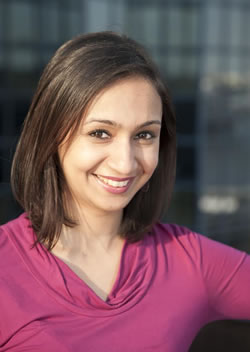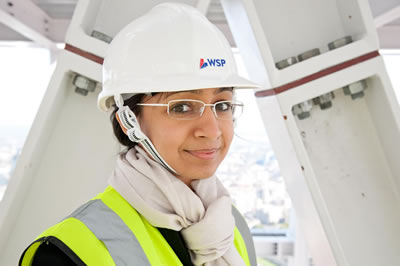#sheblindedmewithscience – meet Roma Agrawal
This is the first in a series of blogs by the five ScienceGrrls who featured in “She Blinded Me With Science”. If you haven’t yet seen the video, it’s here and all sales proceeds are being donated to ScienceGrrl!
 Hi! I’m Roma Agrawal. I am a structural engineer at WSP. A structural engineer’s job is to make sure that bridges and buildings don’t fall down and at WSP I’ve been involved with some amazing projects, including working on The Shard for six years.
Hi! I’m Roma Agrawal. I am a structural engineer at WSP. A structural engineer’s job is to make sure that bridges and buildings don’t fall down and at WSP I’ve been involved with some amazing projects, including working on The Shard for six years.
My first degree was in Physics and people often ask me why I switched to become an engineer. The short answer is because it is fun!
That isn’t a word that most people expect to hear about engineers; they think the work is boring; it’s only for geeks; they fix boilers, or get muddy on site. Most of those stereotypes are wrong or unhelpful – even where they are partly true they miss the point! The reality is that engineers are problem solvers, and that is not just essential for our society but an interesting and creative job that is very rewarding. And fun!
Making the music video
It can be hard to get that fun across to people, which was why I was so excited about taking part in “She blinded me with science” and getting to talk about what I love. Excited… but a bit apprehensive… I was very relieved to find out that I wouldn’t be required to dance for the video!
I think it’s a fantastic way to break some of those terrible preconceptions we have about science and engineering and the people we picture working in these fields. Here is a group of talented, brilliant, lovely women who are excelling in their fields and have a huge range of interests outside work as well. And it was great to get to talk about what I love. Here are some of the bits that didn’t make it into the music video:
[fve]https://www.youtube.com/watch?v=OnlnY67UnjE[/fve]
Working on The Shard
I was at a party at a flat in London earlier this year with a wonderful view of The Shard. People were saying what a beautiful building it is – but no one commented on the fact that it is a fantastic piece of engineering! I was part of the team at WSP that designed The Shard. I worked on the foundations and Spire at the very top of the tower. Every day of the fantastic six years I spent on this project brought new design challenges – it was never boring.
We used a method called ‘top down construction’ to build the basement of The Shard, which had never been done before. Instead of the standard approach of building the foundations first, we started at the ground floor and constructed the core or spine of the building upwards at the same time as we were excavated downwards and creating the foundations below. We did this in order to build more quickly and efficiently.
When we built The Spire, we had to make sure that it not only looked fantastic but that it could be constructed safely, very high up in the middle of central London. We divided it into modules, which could be assembled in a factory, transported to London and then lifted by crane to the top of The Shard. This hugely reduced the time it took to build it.
My favourite part of engineering is when my projects are under construction. I visit the site – in my boots, and yes they do sometimes get muddy – to make sure that the building is being built to our design. I watch in awe as my little drawings turn into solid, three-dimensional objects, often huge, that I can touch and that people will use. Engineers aren’t solitary academics – we work in teams, brainstorming ideas together and solving the problems that arise.

photo: Nicola Evans, WSP
Encouraging more people into engineering
We need to create a more appealing identity for engineers, a fresh and attractive brand, to attract more people – and especially more women – into the profession. Documentaries on television, articles and features in magazines, newspapers and online can all help, so that people look at The Shard and don’t just think it’s pretty, they wonder at how it was built.
It’s not just the projects that need more visibility – children need to see engineering role models before they are making the crucial decisions about what A level and university subjects to choose. And there need to be more internships and work placements so that students can find out for themselves how varied and interesting engineering is as a job.
Roma Agrawal
@RomaTheEngineer
www.romatheengineer.com
